Bypass Road. 41 Kilometers. Reed Fell
42°56’3104″N 74°58’9473″E
This phenomenon is familiar to everyone, and the sight of black smoking fields does not cause concern for anyone. But there is a reason to be concerned! Gardeners and rural residents begin to prepare their plots for the new season. The simplest way to get rid of last year's dried plants is to set them on fire. Moreover, there is still a belief that such a measure improves soil fertility.
However, this assertion has long been disproven by specialists. The argument that the ash from burned plants fertilizes the soil is as far from the truth as the claim that grass grows faster. Dried stems decompose almost completely within 2-3 months, their organic matter ends up on the soil surface, essentially becoming part of that soil. During the burning, the organic matter is consumed by fire, which leads not to enrichment but, on the contrary, to a noticeable decrease in soil fertility. The losses of nitrogen in the form of gaseous oxides are particularly evident in such fires. And, I repeat, the fire incinerates numerous insects, disrupting the established natural biological balance in the soil layer, causing a semblance of a local ecological disaster. For local inhabitants, it is not just a semblance, but a real catastrophe.
Additionally, grass is intentionally burned by agricultural organizations and farmers to clear fields and meadows of unwanted vegetation and last year's remnants. It is sometimes difficult to explain that reeds need to be mowed, not burned. Fire spreads quickly across grass and easily jumps to trees. Such fires are very dangerous. Firefighters do not always manage to quickly control the flames, and the fire can then take on threatening dimensions. All this is due to hooliganism or negligence on the part of people.
Burning dry grass leads to the destruction of nests and breeding sites for birds such as the mallard, teal, lapwing, grasshopper warbler, snipe, reed and common bunting, field, forest, and crested larks, and meadow pipit (burned bird nests with traces of eggs are often found in the aftermath of fires). Animals, reptiles, and amphibians can also perish and suffer in the fire: especially newborn hares, hedgehogs and their young, toads, and frogs. Some burn, while others suffocate in the smoke. The area will take decades to recover from such losses.
In a strong grass fire, in some places, the ground heats up quite significantly (sometimes above 90 degrees Celsius at a depth of 3-4 cm). Almost all animals living in dry grass or on the soil surface perish, as do many insects, their larvae, pupae, as well as earthworms and other creatures that destroy various garden pests and participate in soil formation. Grass fires can cause damage to floodplain forests and plantations; they burn a mass of seeds from annual grasses, small shrub saplings, and young trees.
Moreover, reed burning poses a threat to residential buildings, outbuildings, and sometimes even to human life. The smoke rising from burning fields pollutes the air in populated areas and is very harmful to people with lung diseases. Additionally, the smoke can be toxic, as burning grass along roads and in urban areas releases heavy metal salts into the air, while in rural areas, remnants of fertilizers and pesticides burn in the fire, poisoning the air.
Building a bonfire in warm and windy weather is dangerous. During the fire hazard period, a small fire can grow to large sizes, requiring the efforts of dozens of people to extinguish it, leading to significant material costs.
Unfortunately, this does little to scare people, so some continue to burn dry grass every spring, believing that they are simplifying agricultural work and cleaning the land of debris. Meanwhile, such individuals can be held accountable under the law for the mere act of setting fire to reeds—regardless of whether negative consequences occurred or only a threat existed. The severity of the consequences and the circumstances under which the grass burned only determine the amount of the fine.
This phenomenon is familiar to everyone, and the sight of black smoking fields does not cause concern for anyone. But there is a reason to be concerned! Gardeners and rural residents begin to prepare their plots for the new season. The simplest way to get rid of last year's dried plants is to set them on fire. Moreover, there is still a belief that such a measure improves soil fertility.
However, this assertion has long been disproven by specialists. The argument that the ash from burned plants fertilizes the soil is as far from the truth as the claim that grass grows faster. Dried stems decompose almost completely within 2-3 months, their organic matter ends up on the soil surface, essentially becoming part of that soil. During the burning, the organic matter is consumed by fire, which leads not to enrichment but, on the contrary, to a noticeable decrease in soil fertility. The losses of nitrogen in the form of gaseous oxides are particularly evident in such fires. And, I repeat, the fire incinerates numerous insects, disrupting the established natural biological balance in the soil layer, causing a semblance of a local ecological disaster. For local inhabitants, it is not just a semblance, but a real catastrophe.
Additionally, grass is intentionally burned by agricultural organizations and farmers to clear fields and meadows of unwanted vegetation and last year's remnants. It is sometimes difficult to explain that reeds need to be mowed, not burned. Fire spreads quickly across grass and easily jumps to trees. Such fires are very dangerous. Firefighters do not always manage to quickly control the flames, and the fire can then take on threatening dimensions. All this is due to hooliganism or negligence on the part of people.
Burning dry grass leads to the destruction of nests and breeding sites for birds such as the mallard, teal, lapwing, grasshopper warbler, snipe, reed and common bunting, field, forest, and crested larks, and meadow pipit (burned bird nests with traces of eggs are often found in the aftermath of fires). Animals, reptiles, and amphibians can also perish and suffer in the fire: especially newborn hares, hedgehogs and their young, toads, and frogs. Some burn, while others suffocate in the smoke. The area will take decades to recover from such losses.
In a strong grass fire, in some places, the ground heats up quite significantly (sometimes above 90 degrees Celsius at a depth of 3-4 cm). Almost all animals living in dry grass or on the soil surface perish, as do many insects, their larvae, pupae, as well as earthworms and other creatures that destroy various garden pests and participate in soil formation. Grass fires can cause damage to floodplain forests and plantations; they burn a mass of seeds from annual grasses, small shrub saplings, and young trees.
Moreover, reed burning poses a threat to residential buildings, outbuildings, and sometimes even to human life. The smoke rising from burning fields pollutes the air in populated areas and is very harmful to people with lung diseases. Additionally, the smoke can be toxic, as burning grass along roads and in urban areas releases heavy metal salts into the air, while in rural areas, remnants of fertilizers and pesticides burn in the fire, poisoning the air.
Building a bonfire in warm and windy weather is dangerous. During the fire hazard period, a small fire can grow to large sizes, requiring the efforts of dozens of people to extinguish it, leading to significant material costs.
Unfortunately, this does little to scare people, so some continue to burn dry grass every spring, believing that they are simplifying agricultural work and cleaning the land of debris. Meanwhile, such individuals can be held accountable under the law for the mere act of setting fire to reeds—regardless of whether negative consequences occurred or only a threat existed. The severity of the consequences and the circumstances under which the grass burned only determine the amount of the fine.

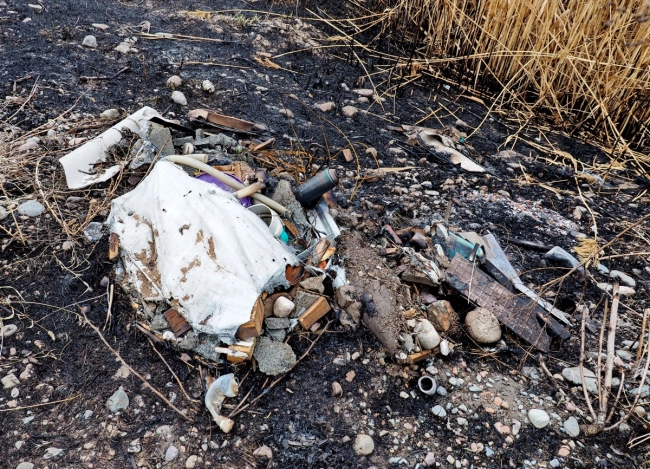
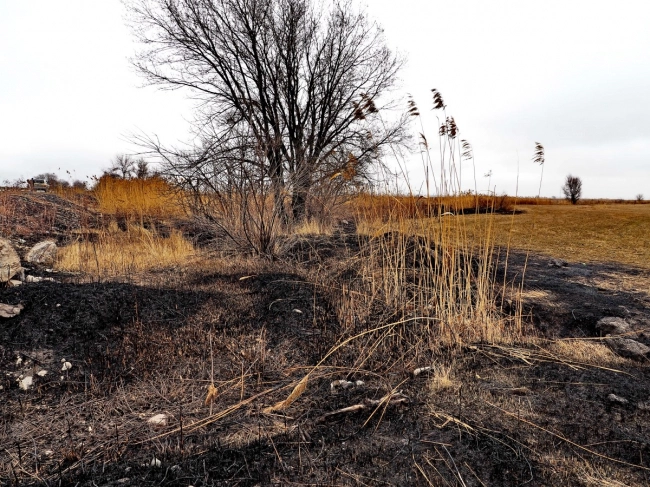
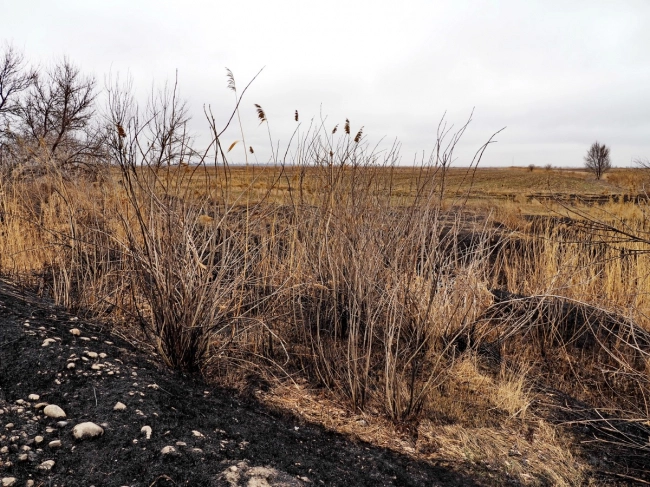
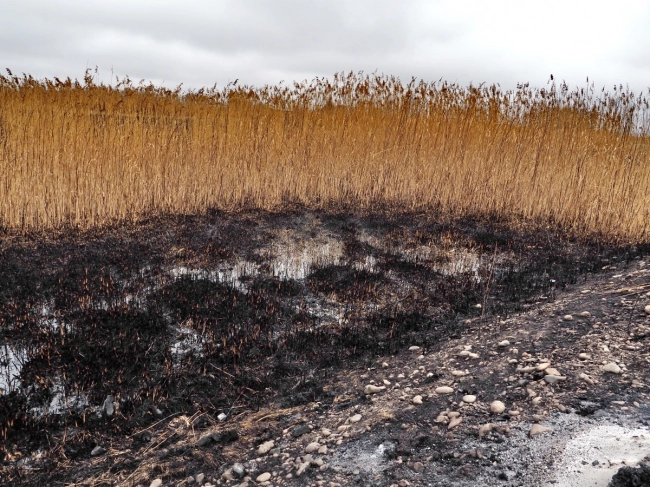


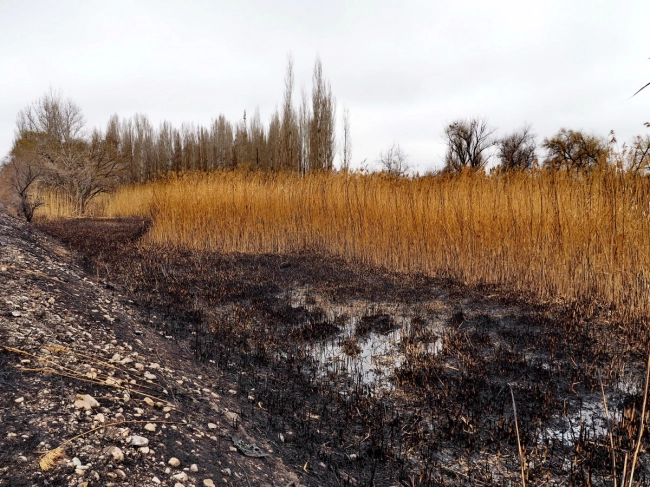
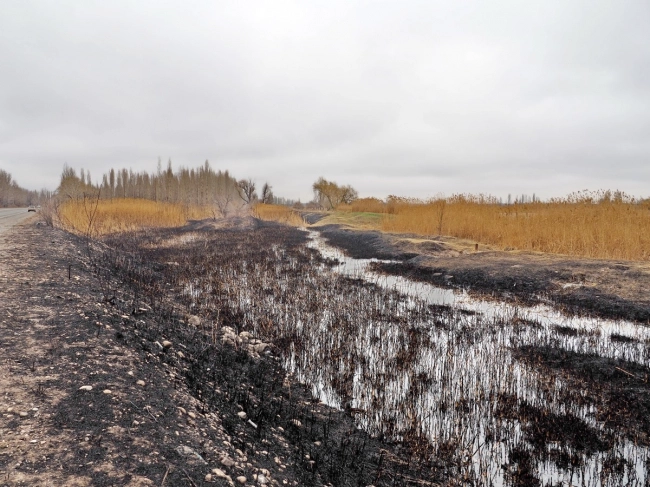
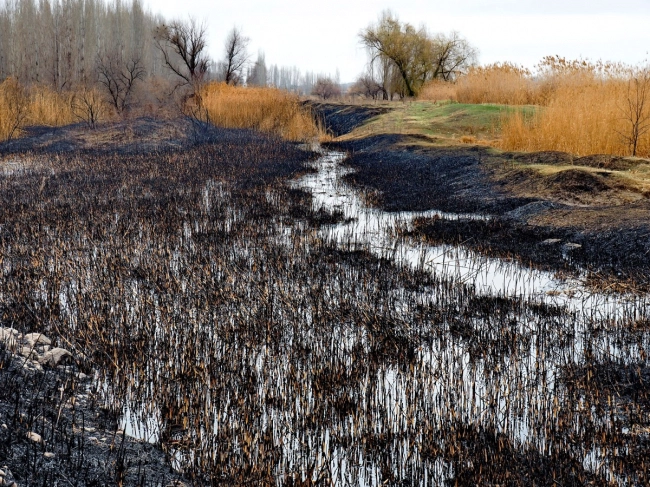

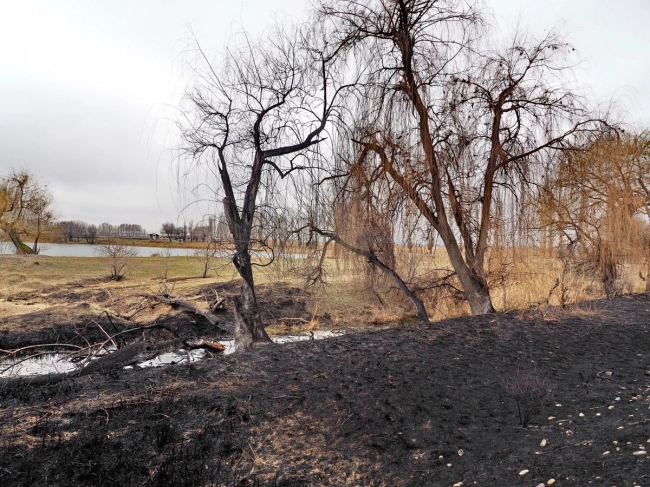




















Attention: Information based on submitted complaints